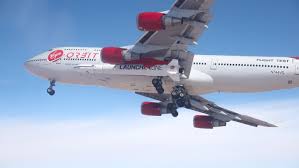
Breaking News
 Mike Rowe appears to be receiving flak for daring to explore the potential dangers of vaccines...
Mike Rowe appears to be receiving flak for daring to explore the potential dangers of vaccines...
 How to Keep Potatoes Fresh for a Year!
How to Keep Potatoes Fresh for a Year!
 A high school student has amazed the global science community with a discovery...
A high school student has amazed the global science community with a discovery...
Top Tech News
 The 6 Best LLM Tools To Run Models Locally
The 6 Best LLM Tools To Run Models Locally
 Testing My First Sodium-Ion Solar Battery
Testing My First Sodium-Ion Solar Battery
 A man once paralyzed from the waist down now stands on his own, not with machines or wires,...
A man once paralyzed from the waist down now stands on his own, not with machines or wires,...
 Review: Thumb-sized thermal camera turns your phone into a smart tool
Review: Thumb-sized thermal camera turns your phone into a smart tool
 Army To Bring Nuclear Microreactors To Its Bases By 2028
Army To Bring Nuclear Microreactors To Its Bases By 2028
 Nissan Says It's On Track For Solid-State Batteries That Double EV Range By 2028
Nissan Says It's On Track For Solid-State Batteries That Double EV Range By 2028
 Carbon based computers that run on iron
Carbon based computers that run on iron
 Russia flies strategic cruise missile propelled by a nuclear engine
Russia flies strategic cruise missile propelled by a nuclear engine
 100% Free AC & Heat from SOLAR! Airspool Mini Split AC from Santan Solar | Unboxing & Install
100% Free AC & Heat from SOLAR! Airspool Mini Split AC from Santan Solar | Unboxing & Install
 Engineers Discovered the Spectacular Secret to Making 17x Stronger Cement
Engineers Discovered the Spectacular Secret to Making 17x Stronger Cement
Virgin Orbit Just Dropped a Rocket From a Boeing 747

Unlike the military aircraft endemic to the area, this was a modified Boeing 747 jumbo jet, its bright red tail emblazoned with a single word: VIRGIN. A 70-foot rocket was strapped beneath its left wing, and about 30 minutes after takeoff jet pilot Kelly Latimer released the rocket and sent it careening to the desert floor 35,000 feet below.
Although the rocket was "fully loaded," as the company put it, its engines never fired—nor were they meant to. Instead, the rocket fell freely to Earth so the company could see how it performed during its first few seconds of freefall. This was the last major test for Virgin Orbit's air-launch system, which will launch rockets from a gutted jumbo jet, known as Cosmic Girl, to boost small satellites into orbit. It's a complicated maneuver, but it could significantly reduce the costs of getting to space.

 Wall Street wants to go 24/7
Wall Street wants to go 24/7

